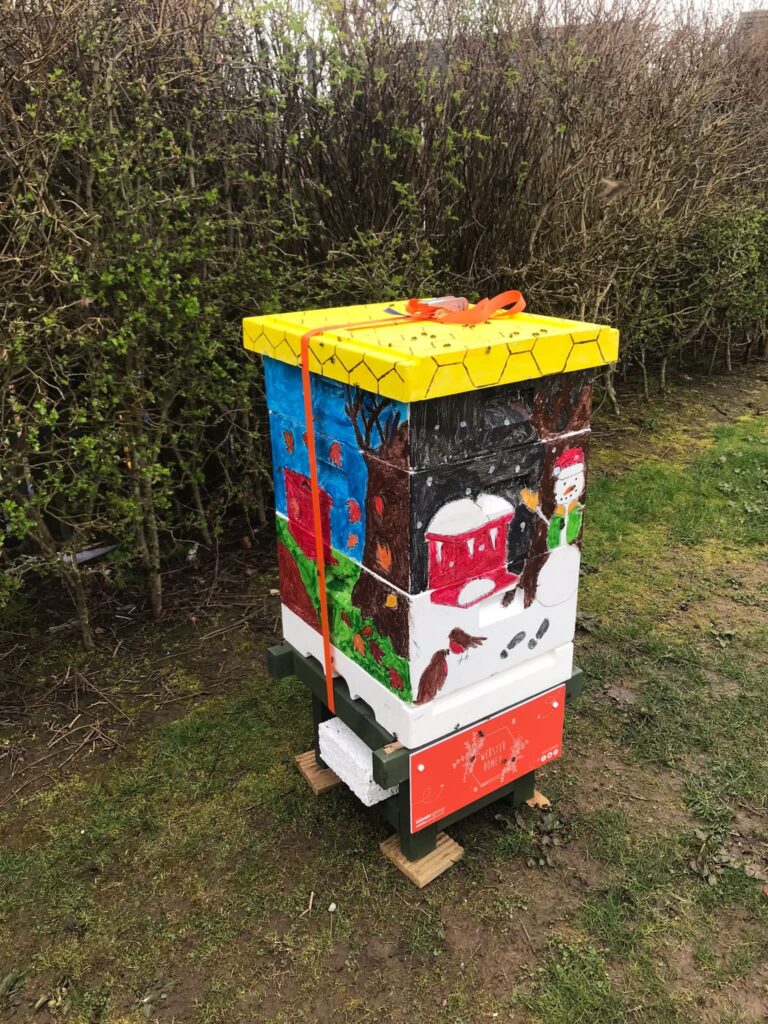PUPILS at a primary school in East Kilbride are ready to spread their wings as they look after a hive of honeybees for the next year.
St Vincent’s Primary was abuzz with excitement as the bees arrived courtesy of Scottish business Webster Honey.
The children transformed the plain white hive into a gloriously colourful home for their new, striped companions.

Topping it all off, the lid designed to look like honeycomb was decorated with the names of all the children taking part in the project in a sweet, personal touch.
The project is ready to be expanded across the country, but it does require a financial input from interested schools.
For £1250, primary kids will receive the hive for a year, as well as a supply of bees of one honeybee season.
Also included is paint and brushes for the decoration process and a supply of equipment, including suits.
Education is a key aspect of the project too, with an initial presentation from an expert and a further ten beekeeping lessons thrown into the mix.
Conor Cahagan, class teacher at St Vincent’s, said: “The hive looks great – the children really enjoyed decorating it – it really is one of the best, most personal parts of the whole project.
“They managed to come up with a bright design and I think putting all their names on the lid was the master stroke. Visitors to the school are already noticing it when they come into the grounds.
“We see this as an exciting opportunity to give real life experience in teaching the children about the important role bees play within our ecosystem.”
With many plants kept alive by pollination, providing crucial food sources to animals, bees are a crucial player in our natural world.
A report published in February by NatureScot found that Scotland was making positive strides in protecting pollinators.
Initiatives such as the project at St Vincent’s have been to key to the success of the country’s 10-Year Pollinator strategy, set to conclude in 2027.
Beekeeper Meik Molitor, who delivered the hive to the East Kilbride school, said: “I’ll be coming on a regular basis to check the hive and carry out the lessons.
“The children can put on their beesuits and observe opening the hive – I always get the most positive feedback on this as it’s a very fascinating experience seeing into the hive.
“Bees do well pretty much anywhere – on city roofs, or in the school grounds – so please get involved if you can.”

